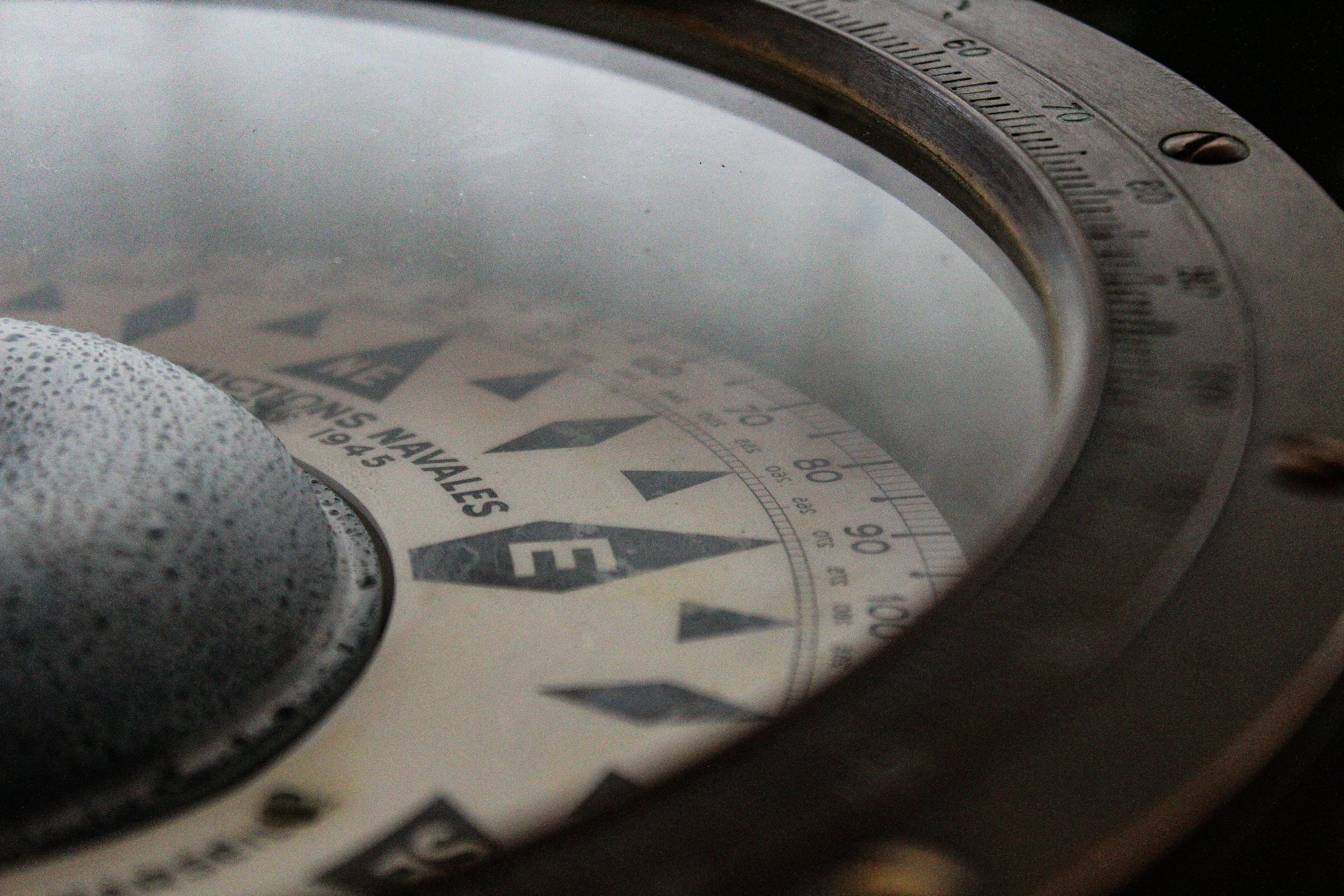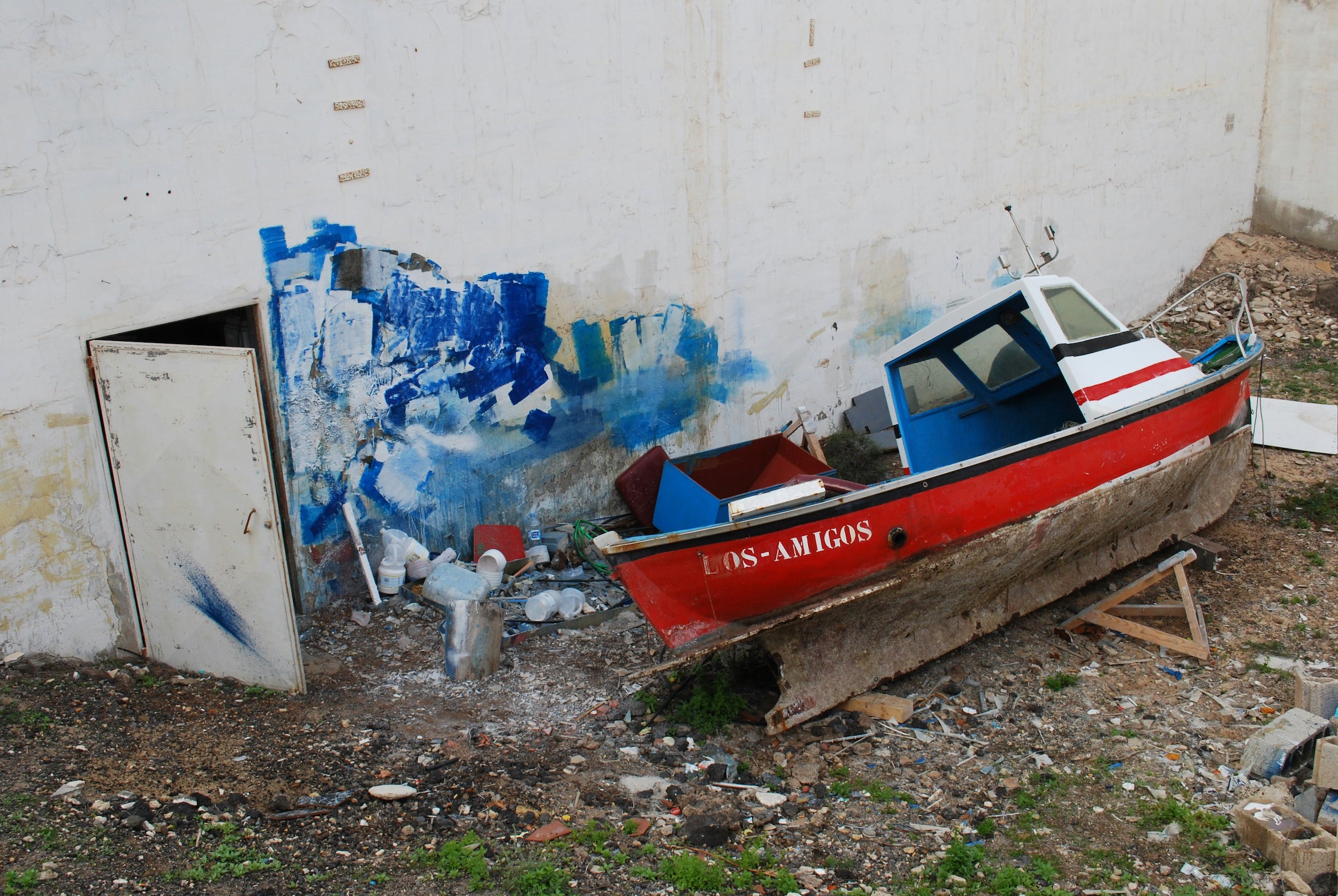Analyzing your sea trips is a powerful driver of progress that many sailors still underestimate. Navigation replays, which allow you to relive and examine in detail every moment spent on the water, transform your experience into a real school of improvement. Whether you practice pleasure sailing, regatta or coastal cruising, this analytical approach offers you the opportunity to precisely identify your points of improvement and to objectively measure your progress. Thanks to modern technologies such as GPS tracks, video recordings, and telemetry data provided by devices like the Oria Marine IoT box, every navigation becomes a source of learning. In this article, we will explore in depth what a navigation replay is, why it is an essential tool for progress, how to use it effectively, and what concrete benefits you can derive from it in the long term to become a more competent and confident navigator.
What is a navigation replay?
Definition and operation
A navigation replay refers to the reconstruction of a sea trip based on data recorded during navigation. The principle is based on the automatic collection of essential information such as your GPS position, your real speed and relative to the bottom, your magnetic heading, your detailed trajectory and the timestamp of your main maneuvers. This data is captured by various embedded instruments, from a simple smartphone equipped with a dedicated application to sophisticated navigation units, through specialized connected devices. Once recorded, this information can be visualized in the form of animated maps, performance charts, or summary dashboards. The major advantage of this system lies in its ability to offer you an external and objective perspective on your navigation, a perspective that is impossible to obtain when you are focused on steering or adjusting the sails. Modern monitoring tools also make it possible to record environmental parameters such as wind strength and direction, sea state or temperature, thus considerably enriching the subsequent analysis of your performance.
The different types of replays available
Navigation replays come in several complementary formats, each bringing a particular perspective on your practice. Video replays, captured by embedded cameras such as GoPro or specialized marine cameras, offer an immersive vision of your navigation and allow you to observe your technical gestures, the behavior of the boat and the real conditions encountered. GPS replays are the most common and accessible form, transforming your digital track into a cartographic visualization of your route with speed, heading and waypoints indications. These traces can be exported in standardized formats such as GPX or KML, facilitating their analysis on different platforms. Finally, synchronized replays represent the pinnacle of analysis by combining embedded video and navigation data superimposed in real time, creating a particularly rich learning experience. This type of replay makes it possible, for example, to precisely correlate a drop in speed visible on the graphics with an awkward maneuver observed on the video, making the identification of errors infinitely more precise and educational.
Why analyze your navigation replays?
Identify maneuvering errors
The analysis of your replays reveals with relentless clarity the maneuvering errors that escape you at the moment, absorbed as you are by the action. The wrong paths are clearly visible when you visualize your GPS track on the map and notice significant deviations from the optimal path. Heading errors, those slight differences that accumulate and cause you to lose valuable distances, become obvious when you compare your real road with the ideal road. Delays in steering or gybing result in speed losses that are visible on the graphs, and a careful examination of these critical moments makes it possible to identify precisely at what stage of the maneuver you are losing time or efficiency. For example, you may discover that you systematically anticipate your transfers too late when going up in the wind, or that you listen too abruptly during gybes. These concrete and measurable observations form the basis for targeted correction work, which is much more effective than vague subjective impressions stored in memory after browsing.
Improving strategy and decision making
Beyond purely technical aspects, replays are an exceptional strategic learning tool. Reading the wind and choosing the optimal edges become objectively analysable when you can superimpose your real trajectory with the recorded meteorological data. You may discover that you have persisted for too long on an unfavorable side when a bank transfer would have allowed you to take advantage of a tipping point. Positioning on the water also takes on a new dimension when you can compare your course with that of other sailors operating under the same conditions, particularly relevant in a regatta situation. This comparison reveals differences in tactical approaches and makes it possible to identify wise choices as well as errors in judgment. Connected systems such as the Oria Marine box considerably enrich this analysis by automatically capturing multiple environmental and performance parameters, thus offering you a global vision of your navigation that transcends simple GPS data to encompass all the factors influencing your strategic decisions.
Optimize boat speed and settings
Optimizing pure performance necessarily involves a detailed analysis of your settings and their impact on the speed of the boat. Replays allow you to precisely correlate your sail adjustments with observed speed variations, creating a real personalized database of optimal settings for your boat in different conditions. For example, you may find that a slightly larger edge of the mainsail in a wind of fifteen knots systematically improves your speed of windward progress, or that a particular adjustment of the genoa proves to be counterproductive in small air. Measuring performance gains between two successive outings is also a powerful motivating factor and makes it possible to objectively validate the effectiveness of the changes made to your technique or your rig. This methodical approach gradually transforms your intuitive navigation practice into expertise based on concrete data, allowing you to develop a real set-up log adapted to your boat and your sailing style, a valuable resource for performing in all conditions encountered.
How to effectively use a navigation replay?
Key steps for a successful analysis
To get the most out of your replays, you should adopt a structured and progressive methodology. The first step is to download and carefully organize your data as soon as you return to port, creating a system for filing by date, type of navigation, and weather conditions, thus avoiding the disorderly accumulation of files that are difficult to use later. Then, identify the key moments of your journey by identifying particularly interesting phases of navigation, whether they are complex maneuvers, changes in conditions, tactical situations during a regatta or simply passages where you have experienced difficulties. The third step, which is often overlooked but absolutely crucial, is to take detailed notes on your strengths and observed mistakes, creating a paper trail that will enrich your learning memory well beyond simple visualization. Finally, transform these observations into a concrete improvement plan, defining two or three specific objectives to work on during your next outing, because it is this continuous improvement loop that truly transforms replay analysis into tangible progress on the water.
The right tools to analyze your replays
The market for navigation analysis tools has grown considerably in recent years, offering solutions for all budgets and all levels of requirements. Platforms like Sail Insight offer sophisticated analyses that are particularly suited to regattas, with visualization of speed polars and detailed comparisons with other competitors. RaceQs is a popular alternative offering an excellent feature-price ratio, with an intuitive interface that allows you to quickly visualize the key points of your performance. Garmin systems, often already present on boats equipped with marine electronics from this brand, offer natural integration and analysis functionalities directly accessible from your instruments. Navionics, mainly known for its nautical charts, also offers valuable tracking and trajectory analysis functions. To choose the tool most suited to your needs, carefully consider the compatibility with your existing equipment, the precision of the data collected, the ergonomics of the analysis interface that will determine your assiduity in use, and of course the price, which must remain in proportion to the intensity of your practice and your goals of progress.
Work in a team or with a coach
Replay analysis gains exponentially in efficiency when shared with other experienced perspectives. A more experienced coach or navigator will immediately identify mistakes or missed opportunities that you may have missed, bringing that external perspective that is so valuable to make rapid progress. In the context of a crew, the use of replay as a collective learning medium transforms debriefings into constructive and factual sessions, overcoming sometimes contradictory subjective impressions to focus on objective and measurable observations. This collaborative approach also promotes team cohesion by creating a common language based on factual analysis rather than reproaches or justifications. Solo navigators can also benefit from this dynamic by joining online communities where members share and comment on each other's replays, creating rewarding collective learning opportunities. This social dimension of replay analysis should not be underestimated because it brings motivation, new perspectives and a significant acceleration of the learning curve for all participants involved in this process of shared progress.
Practical tips for making progress thanks to replays
Incorporate replays into your training routine
For replay analysis to become truly effective, it must be part of a regular and methodical practice rather than remaining an occasional and random activity. A recommended analysis frequency is to systematically review each significant training output, typically once or twice a week for an active browser, while accepting that a lighter analysis is sufficient for routine navigations where nothing particular has occurred. Monitoring progress over the sessions is a motivating and enlightening element of this routine, for example by creating a personal dashboard where you note the evolution of your average speeds, maneuvering times or the quality of your trajectories under different conditions. This traceability transforms your progress into a tangible and measurable reality, reinforcing your commitment to this process of continuous improvement. Some sailors find it useful to program fixed slots in their agenda for the analysis of replays, treating this activity with the same seriousness as a physical training outing, because it is in fact in this regularity that the secret of a lasting and profound progression of your nautical skills lies.
Compare your replays to measure your progress
The systematic comparison of your replays over several sessions reveals trends and developments that are impossible to perceive during the isolated analysis of a single release. By superimposing several GPS tracks of the same course completed on different dates, you can immediately see if your trajectories become more direct and effective over time, a concrete sign of progress in your mastery of the boat and in reading the conditions. Identifying the weather conditions in which you perform best is also valuable strategic information, allowing you to reinforce your weak points through targeted training or to highlight your strengths in your navigation choices. For example, you may discover that you excel in light weather conditions but lose efficiency when the wind is strong, a valuable orientation for your next training sessions. Modern tracking devices greatly facilitate these comparisons by automating the collection and archiving of data, and some even offer advanced statistical analyses that reveal subtle patterns in your practice, thus offering you an ever closer understanding of your browser profile and the priority areas of work to continue to progress.
Avoid common mistakes in replay analysis
Even with the best tools and the best intentions, some pitfalls await the browser that analyzes its replays without sufficient hindsight. The most common mistake is to focus exclusively on raw speed, neglecting equally important aspects such as smooth maneuvers, strategic coherence or saving crew energy. A high instantaneous speed means nothing if it is the result of excessive risk-taking or a major departure from the optimal route. Forgetting the context represents another major error: analyzing a performance without taking into account the precise weather of the moment, the maritime traffic encountered or the specific strategic constraints completely distorts the conclusions and can lead to counterproductive learning. Finally, many sailors fall into the trap of neglecting consistency in favor of a single brilliant move, while nautical performance is based above all on the ability to maintain a high level over time rather than on one-off feats. A balanced approach considers all of these dimensions and seeks primarily the consistency and reproducibility of good performances rather than isolated peaks that are often more a matter of luck than real control.
The long-term benefits of replay analysis
Regular investment in the analysis of your navigation replays produces profound and lasting benefits that gradually transform your relationship with the sea and the boat. First of all, on the technical level, you develop an increasingly fine control of maneuvers and adjustments, gradually integrating the corrections identified until they become natural and fluid automations. Strategically, you refine your ability to read situations, to anticipate developments and to make optimal decisions in ever shorter timeframes, a particularly valuable skill in regattas but also in cruising where the right decision at the right time can make all the difference between pleasant sailing and an uncomfortable situation. The best foresight of weather and maritime conditions comes naturally from this analytical practice, with your brain gradually building an increasingly sophisticated mental model of the relationships between the various observed parameters and the resulting performances. Finally, and this benefit is far from being negligible, this approach considerably strengthens your confidence in navigation by replacing doubts and hesitations with certainties based on the experience analyzed, and by increasing your coherence, which becomes a recognizable signature of your sailing style, the foundation of a continuous progression towards nautical excellence.
FAQ: Navigation replays — your frequently asked questions
What free tools allow you to analyze your replays?
Several free solutions offer quite satisfactory analysis features to start with. The Navionics Boating and Windy applications offer free GPS tracking functions with basic visualization of your tracks. RaceQs offers a limited but functional free version to discover replay analysis. Garmin Connect also allows free analysis of traces recorded by their compatible watches and instruments. Finally, general applications such as Strava, originally designed for land sports, can be used to analyze your nautical outings with interesting statistical and comparison features.
Do you need an onboard camera to do an effective replay?
Absolutely not, even if the video is a valuable complement. GPS replays alone already provide a wealth of considerable information to make progress, especially concerning trajectories, speed and overall strategy. The onboard camera becomes really useful when you want to finely analyze your technical gestures, crew gestures or the visual settings of the sails, but it is by no means essential to start an effective practice of analyzing replays. Many successful navigators base all their analysis on GPS and telemetry data alone with excellent results.
How much time should you devote to analysing a replay?
The optimal duration depends on the length of your browsing and your goals, but usually fifteen to thirty minutes is enough for a productive analysis of a two to three hour outing. The important thing is not so much the duration as the consistency and the focus on a few key points rather than comprehensiveness. An analysis that is too long becomes counterproductive because it dilutes your attention and reduces your motivation to maintain this practice. Short and frequent sessions are better than an occasional marathon analysis from which you will only learn a fraction of the lessons.
Can we compare its replays with those of other browsers?
Yes, and this feature is precisely one of the most rewarding aspects of replay analysis. Most platforms dedicated to regatta allow multiple GPS tracks to be superimposed to compare trajectories and identify strategic differences. Some apps even offer automatic rankings and comparisons with other users browsing in the same areas. This comparative dimension accelerates learning considerably by exposing your practice to other approaches and by revealing tactical possibilities that you would not have considered alone.
Are replays useful for newbies?
Absolutely, and maybe even more than for experienced sailors. Beginners progress much more quickly when they can objectively observe their mistakes and progress rather than relying solely on their often misleading subjective sensations. Analyzing replays makes it possible to transform each outing into a concrete and memorable lesson, considerably speeding up the learning curve. For a beginner, seeing your trajectory become progressively more direct and effective as you go out is a powerful source of motivation and a tangible validation of the efforts made to progress.
Conclusion
The methodical analysis of your navigation replays is much more than a simple technological gimmick: it is a real catalyst for progress that turns each sea trip into a concrete and measurable learning opportunity. By adopting this analytical approach, you replace unclear impressions and partial memories with objective data and accurate observations that form the basis for solid and sustainable progress. This practice is a natural part of a continuous training process where each session on the water feeds the next, creating a virtuous spiral of constant improvement. Modern technologies, from simple GPS applications to sophisticated connected systems, are now democratizing access to these analysis tools that were formerly reserved for professional runners, offering every navigation enthusiast the opportunity to optimize their practice. The rapid evolution of digital analysis tools in yachting and regattas promises even more exciting developments in the years to come, with the increasing integration of artificial intelligence capable of automatically suggesting personalized improvements. Engage in this process of continuous improvement today, and you will quickly discover how the simple fact of carefully observing your navigation can radically transform your skill and your enjoyment on the water.









